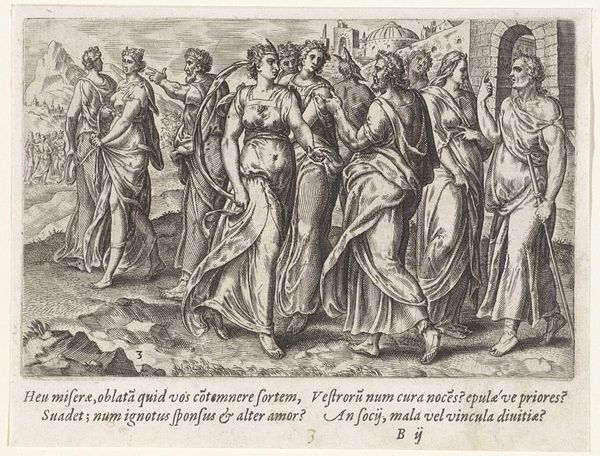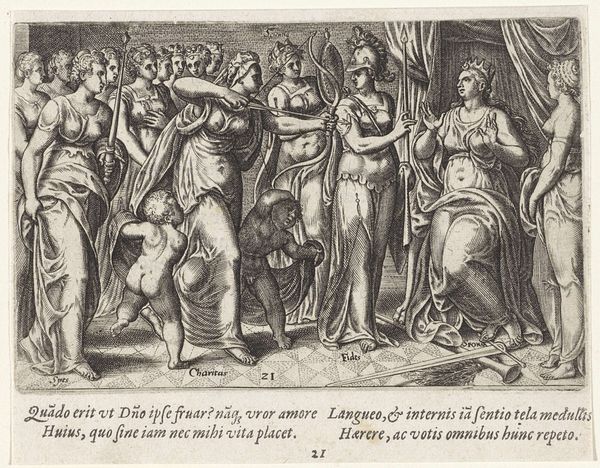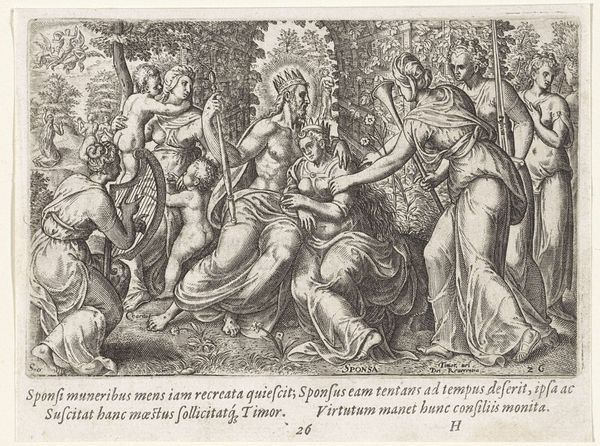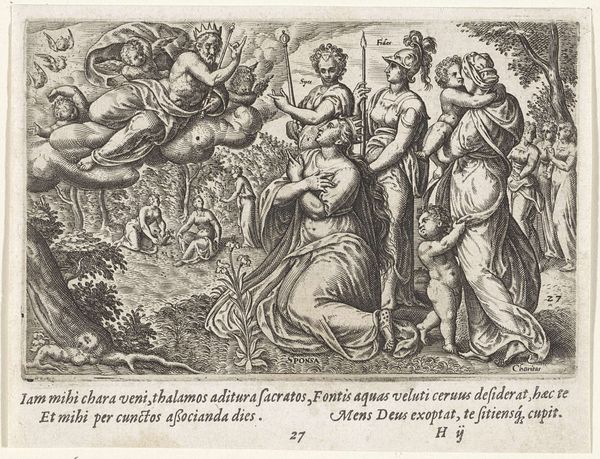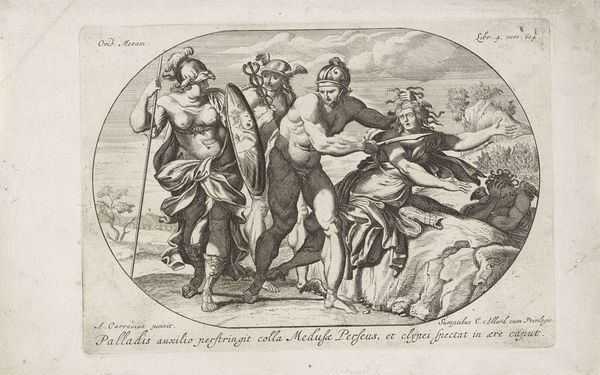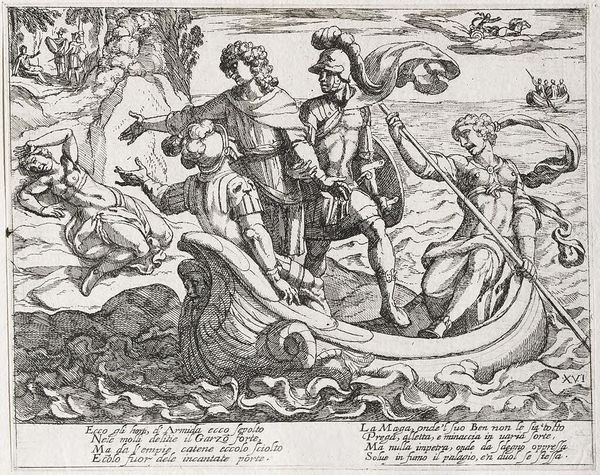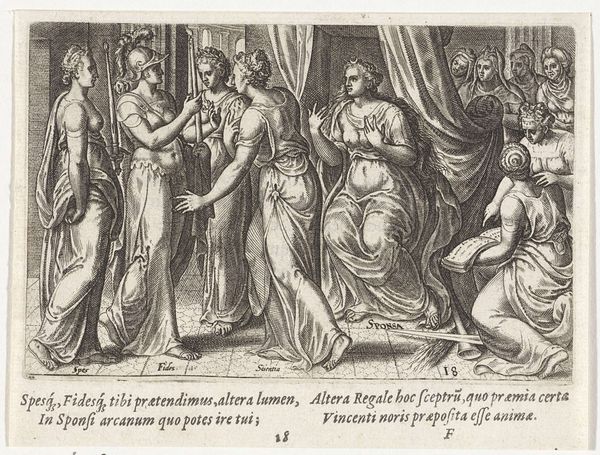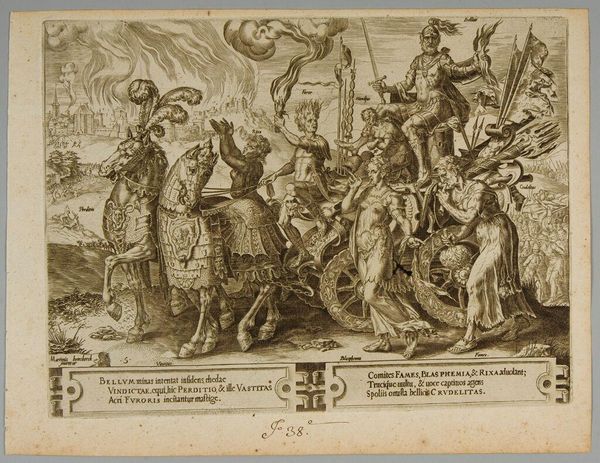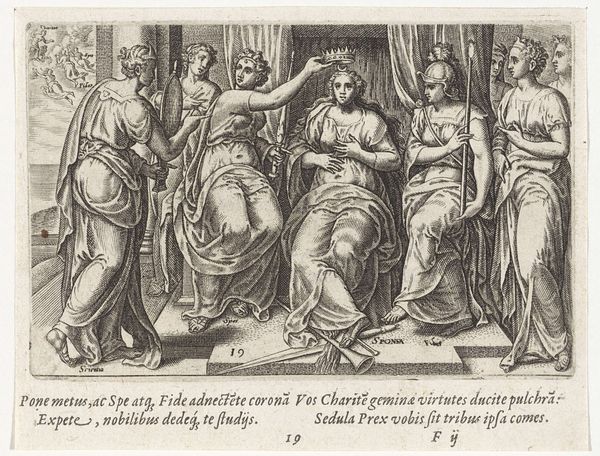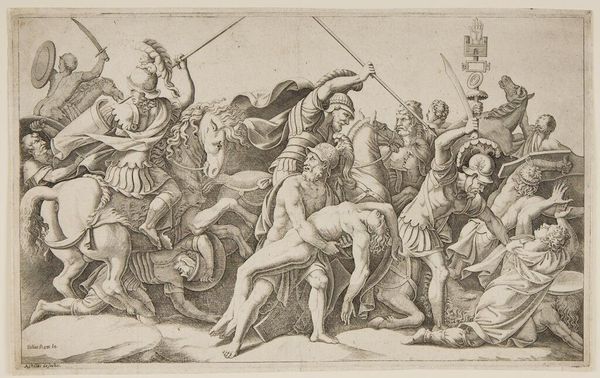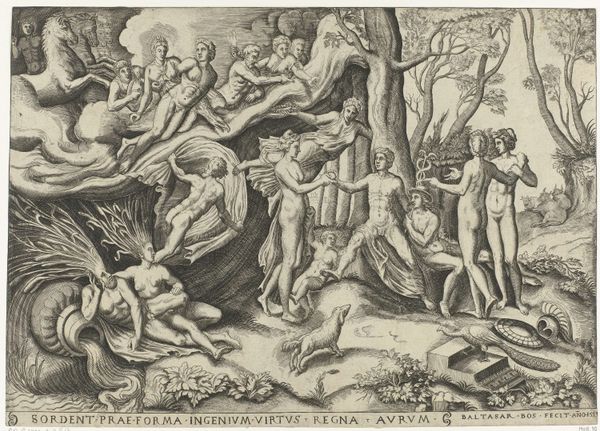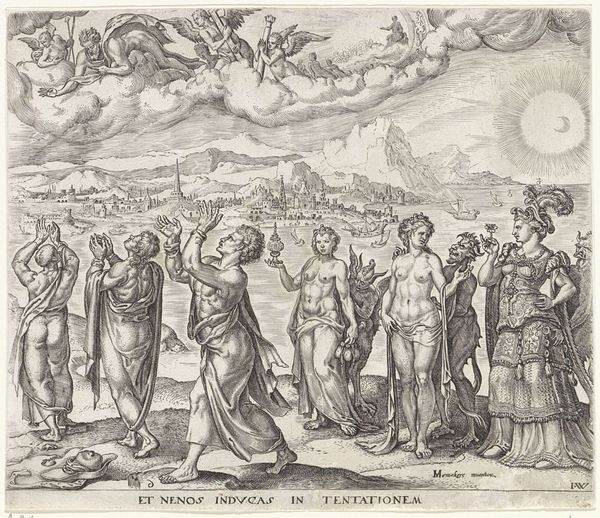
print, engraving
#
allegory
# print
#
mannerism
#
figuration
#
line
#
history-painting
#
engraving
Dimensions: height 94 mm, width 140 mm
Copyright: Rijks Museum: Open Domain
Curator: This intricate engraving, titled "Koning op weg naar de bruid" and dating back to 1574, comes to us from the hand of Wierix and is currently held in the collection of the Rijksmuseum. What are your first thoughts? Editor: My immediate reaction is to the level of detail, especially considering its likely diminutive scale as a print. There’s almost an overwhelming abundance of textures—from the musculature of the figures to the folds of drapery. It speaks to a very dedicated process, lots of work by hand. Curator: Absolutely. The meticulous engraving highlights Mannerist stylistic tendencies: note the exaggerated poses and somewhat idealized nudes, and also consider its likely allegorical intentions, blending classical themes with social commentary. This piece asks, what is the processional *for*? Editor: The use of line, then, becomes critical to conveying not just form but also the symbolic weight you are mentioning. We see a range of linear techniques, from dense cross-hatching to create shadow and volume to more delicate lines defining the contours. This points toward deliberate craftsmanship in creating hierarchies of importance. And note the text included as part of the print—almost directing us! Curator: Exactly! Let’s not ignore the clear presence of power dynamics too, gendered ones in particular. This print, using classical figures as a mouthpiece, intersects with complex social mores and questions how marriage can be viewed as both a personal and political act. Editor: Examining Wierix’s methods, his choices about materials and reproduction – these can all give insight to an audience from then and even now – because it forces you to decide which voices should carry the most meaning and ultimately define relationships. The King and his "entourage" for sure is placed at the peak of some artistic/social hierarchy in terms of meaning-making. Curator: That’s such an incisive comment. It invites us to really reflect on how such processional imagery reflects the anxieties around transitions and who controls those pivotal moments in history. Editor: It's compelling how engaging with the labor and intentionality evident in these historical engravings can open up a lens through which we look back to critique contemporary society and its means of control. Curator: Agreed, bringing in the understanding of material context creates so much narrative power for us to appreciate and investigate these earlier art forms with greater intersectional nuance and care. Editor: Precisely. Now I find I appreciate the incredible dedication to materials in this specific moment in time to make something beautiful, even though perhaps politically it's questionable today.
Comments
No comments
Be the first to comment and join the conversation on the ultimate creative platform.
